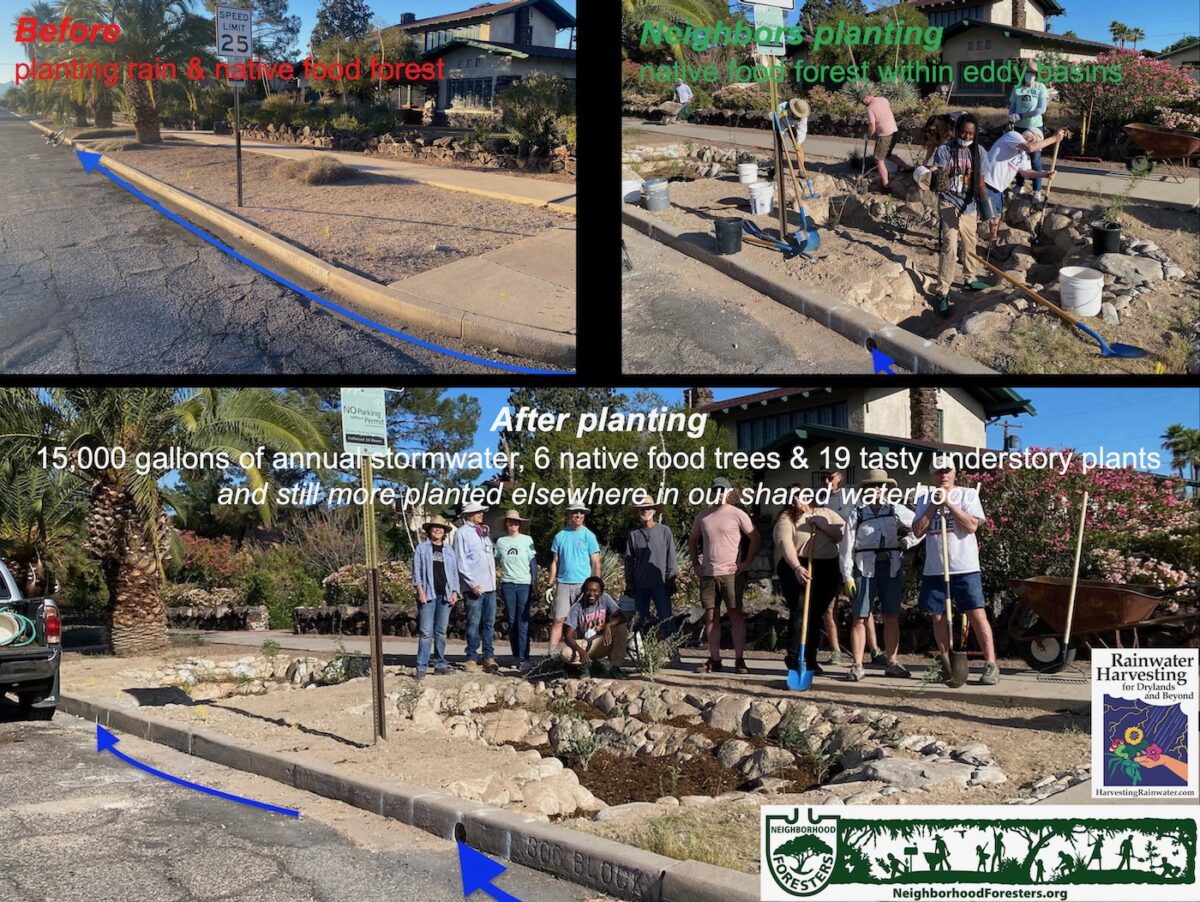Our 28th annual Dunbar/Spring Neighborhood Rain, Tree, & Food Forest Planting extended into the adjoining West University Neighborhood for a fifth year here in Tucson, Arizona.
But as both neighborhoods are part of, and share, the same watershed, you could say we planted in just one waterhood.
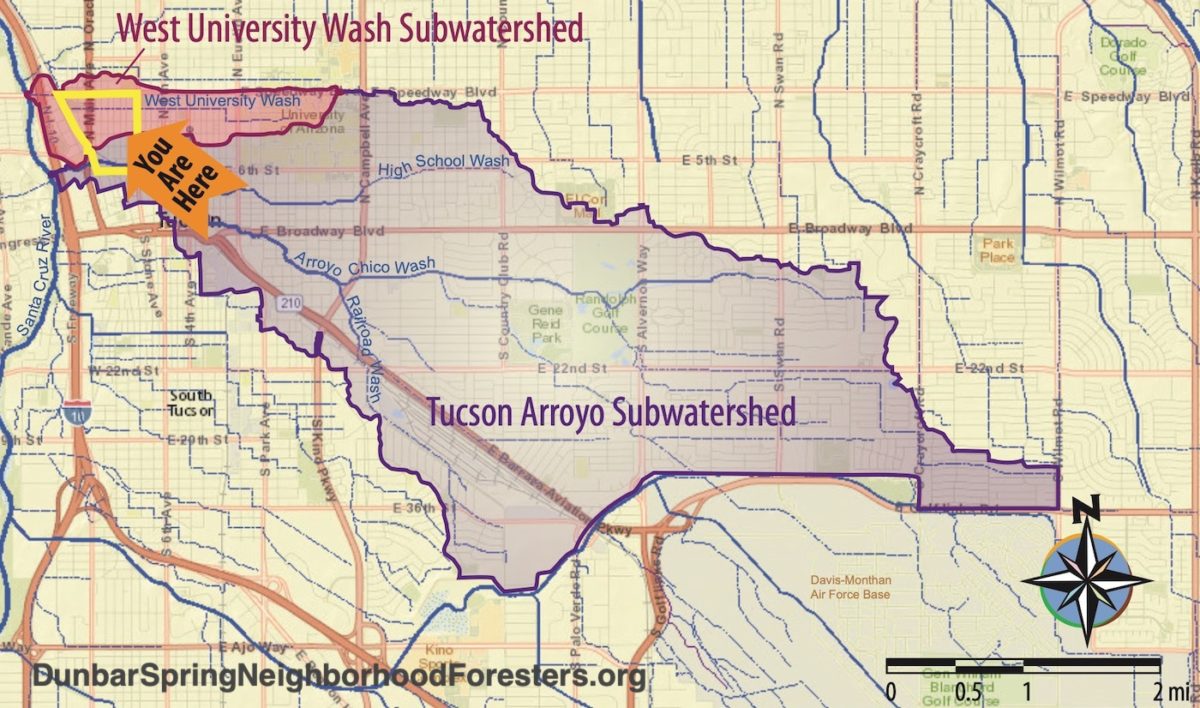
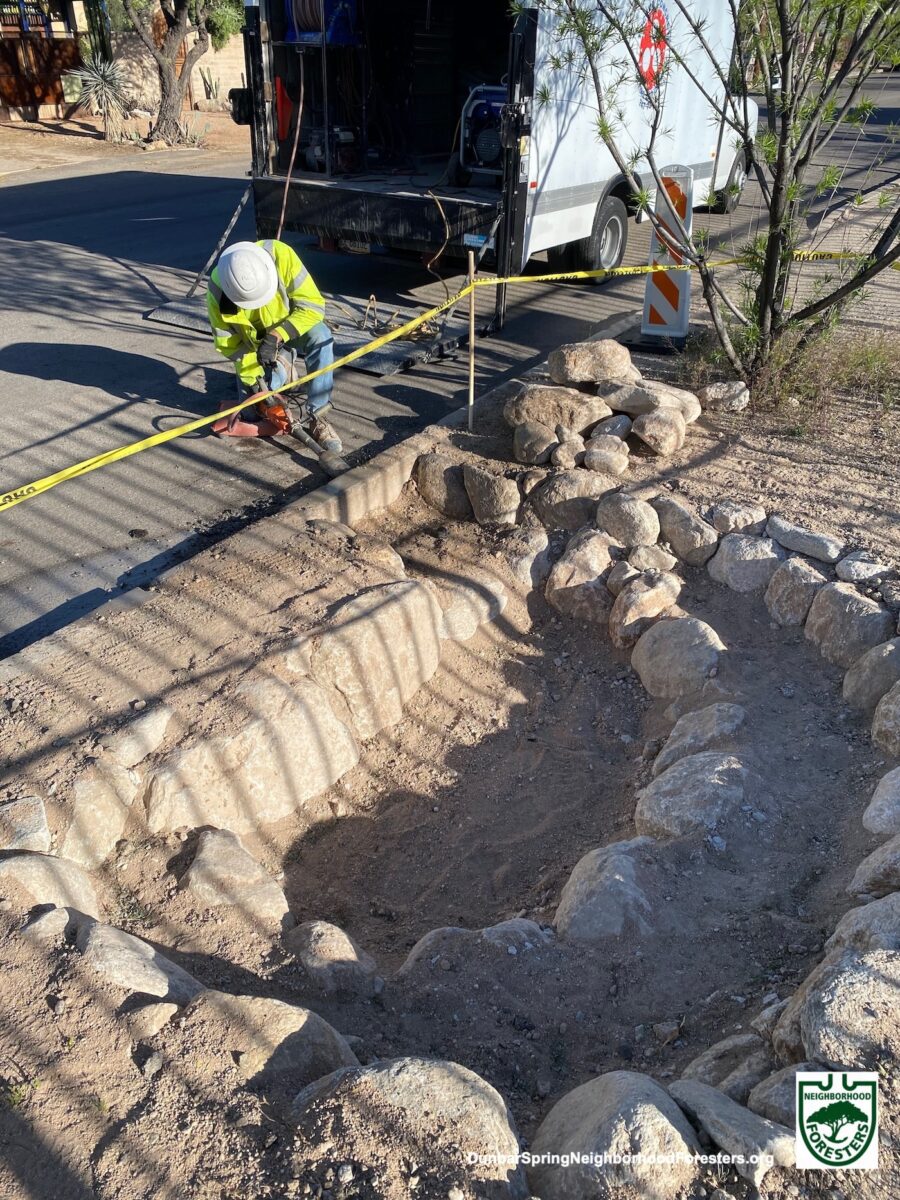
Photo: Brad Lancaster

Photo: Brad Lancaster
In total, during our 2024 planting, we planted:
• Over 45,000 gallons of stormwater (that will be captured in the constructed street-stormwater-harvesting earthworks in an average year of rain).
(This water used to wastefully drain out of the neighborhoods, dehydrating them and creating downstream flooding).
We plant the rain before we plant any plants, so after establishment, passively-harvested rainwater and stormwater will be the sole irrigation source of the plantings post establishment. It takes one to three years of supplemental irrigation to get the plants established so they can then subsist on passively harvested rain and runoff alone.
• 26 native food-bearing trees that will grow to full size.
• 21 bush trees (see here for an example)
• 115 native, multi-use understory plants
• Quarter pound of Wildlands Restoration’s native wildflower seed mix; and Bosque del Bac Restoration seed mix, sown along with neighborhood-grown coyote gourd seed and datura seed.
Volunteers who helped plant:
61
Neighborhoods represented by the volunteers that helped plant:
16
Neighborhood blocks of public pedestrian paths cleared of gravel/rock, pruned, and widened to five feet—to regain full pedestrian access:
1
Four-inch diameter curb cores made to direct street runoff into street-side basins:
16
Existing driveway dips in street curb used as street-side basin inlets:
1
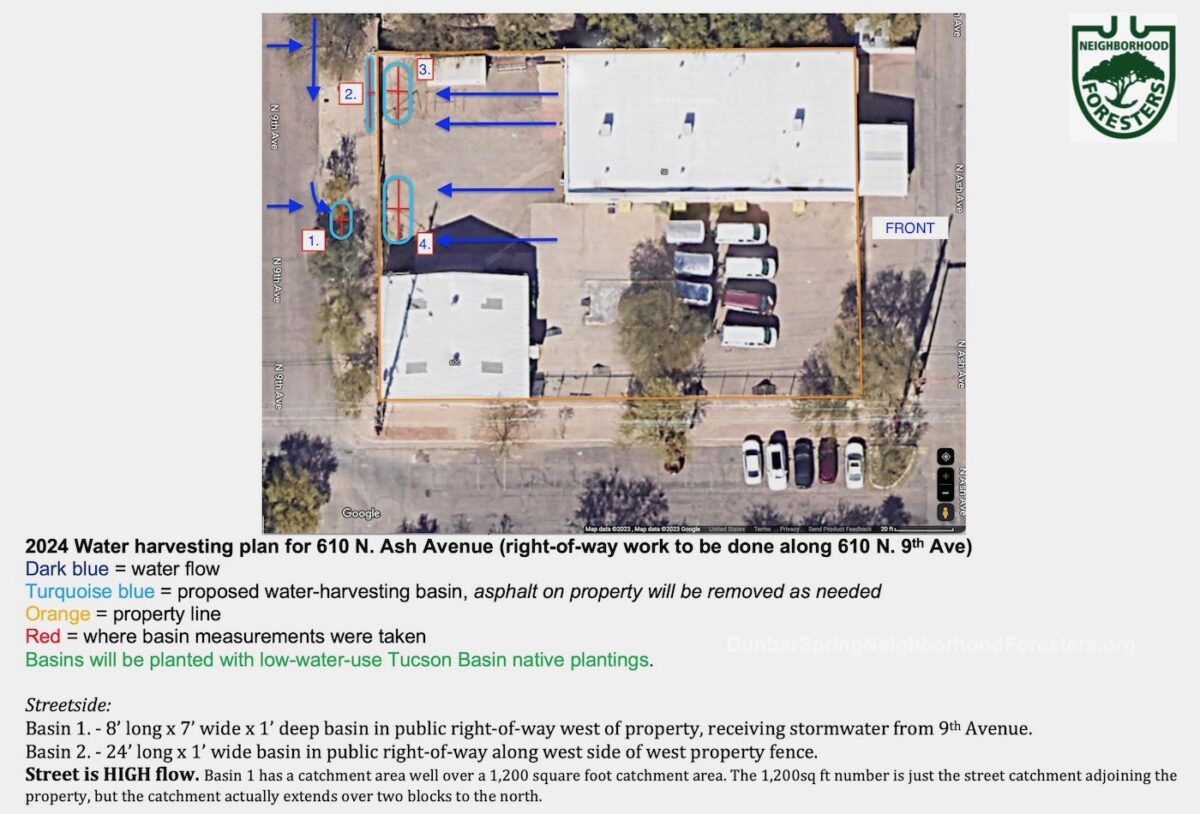
Dunbar Spring Neighborhood Foresters creates a design and plan for everyone participating in our annual rain and native food forest planting program.

White rectangle shows where the water-harvesting basin will be dug by the backhoe. Blue dashed lines show location of underground water line.
We call 811 a week before any excavation for a free service that marks the locations of underground utility lines. All basins and planting are inspected and permitted through the City of Tucson.
Blue arrow denotes water flow.
Photo: Brad Lancaster
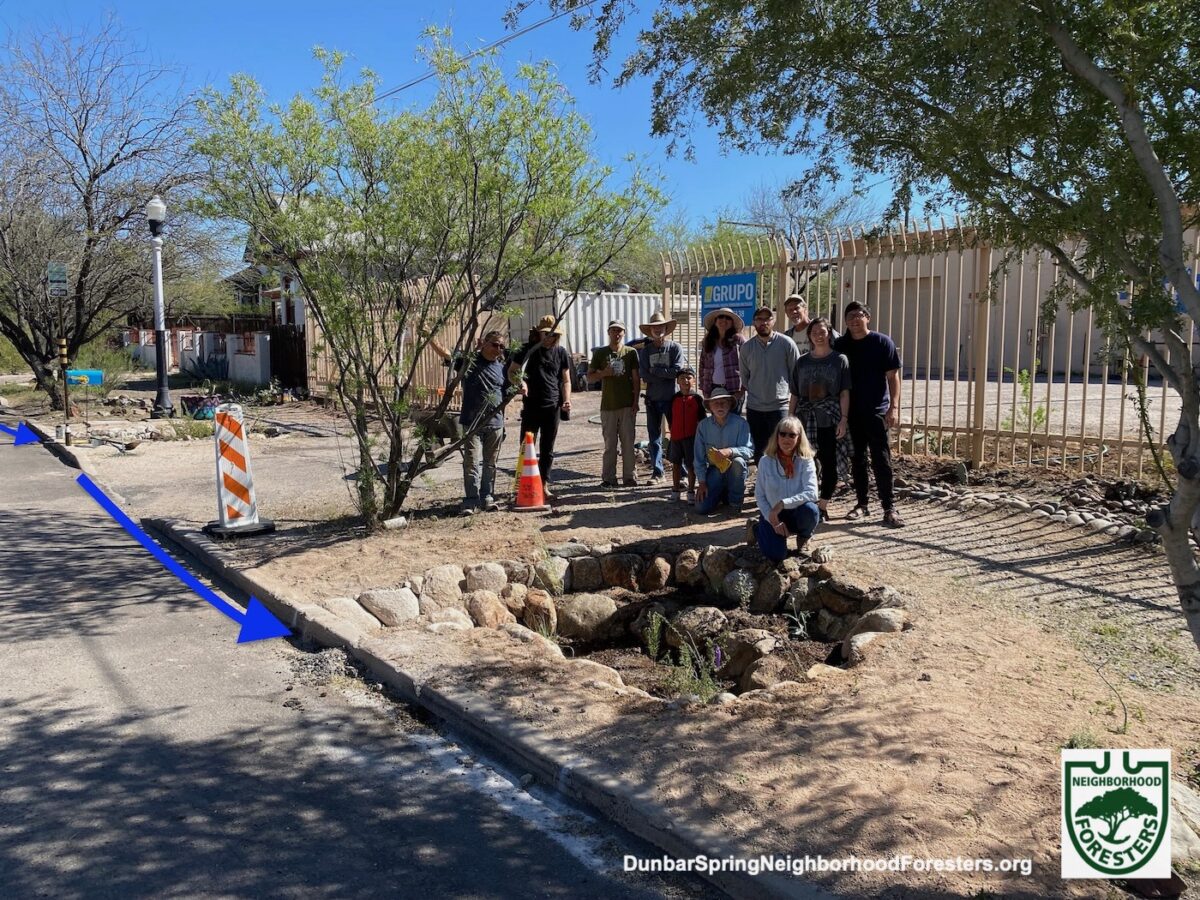
Last year’s basin is upstream. Blue arrow denotes water flow.
Photo: Brad Lancaster
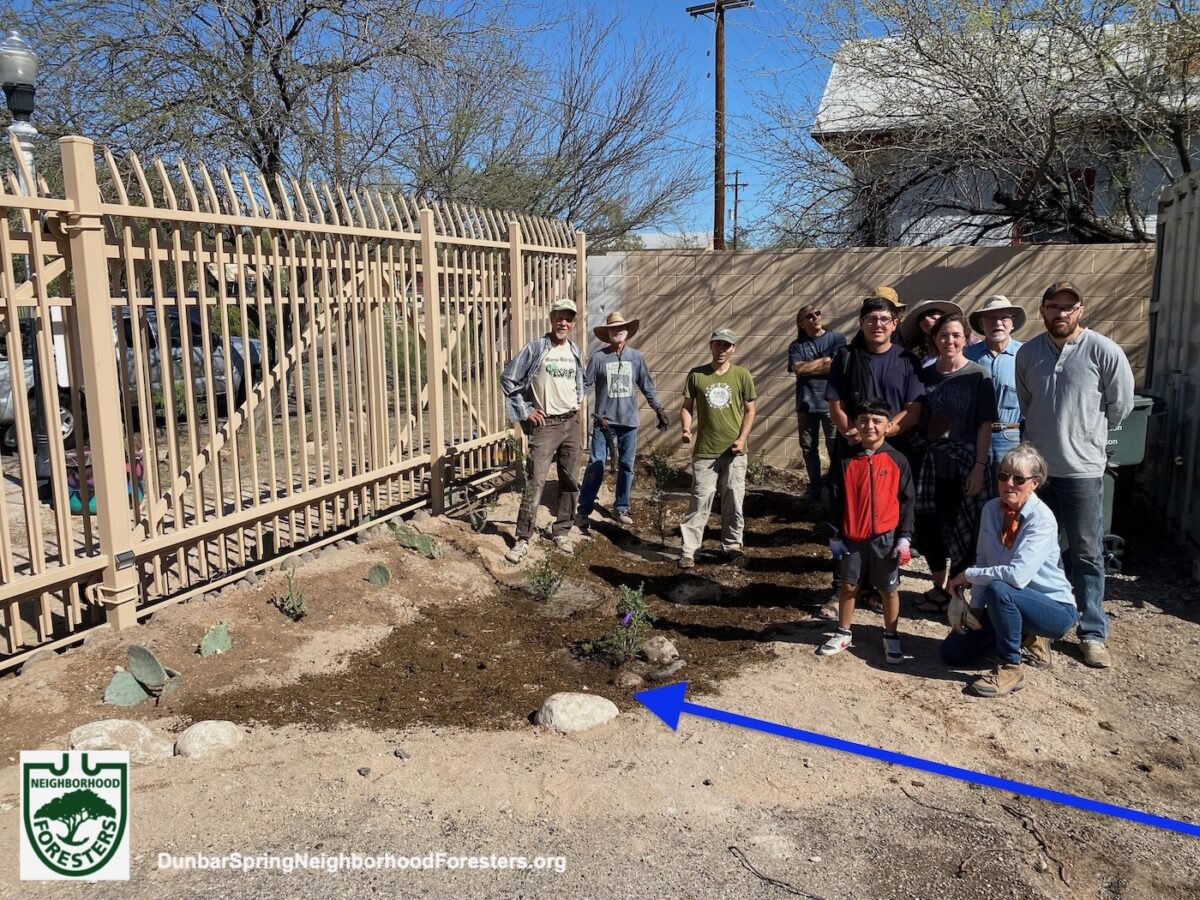
Blue arrow denotes water flow.
Photo: Brad Lancaster

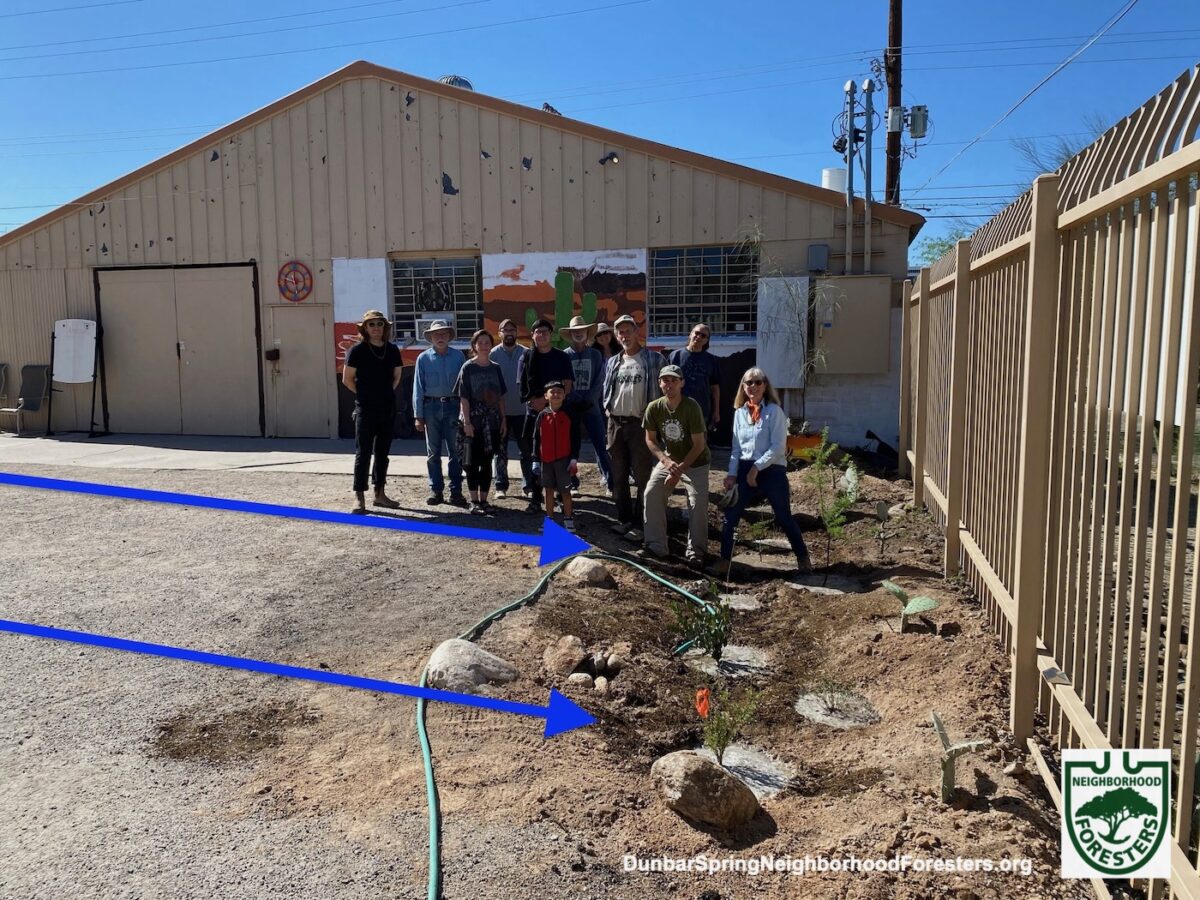
Blue arrow denotes water flow.
Photo: Brad Lancaster

Photo: Brad Lancaster
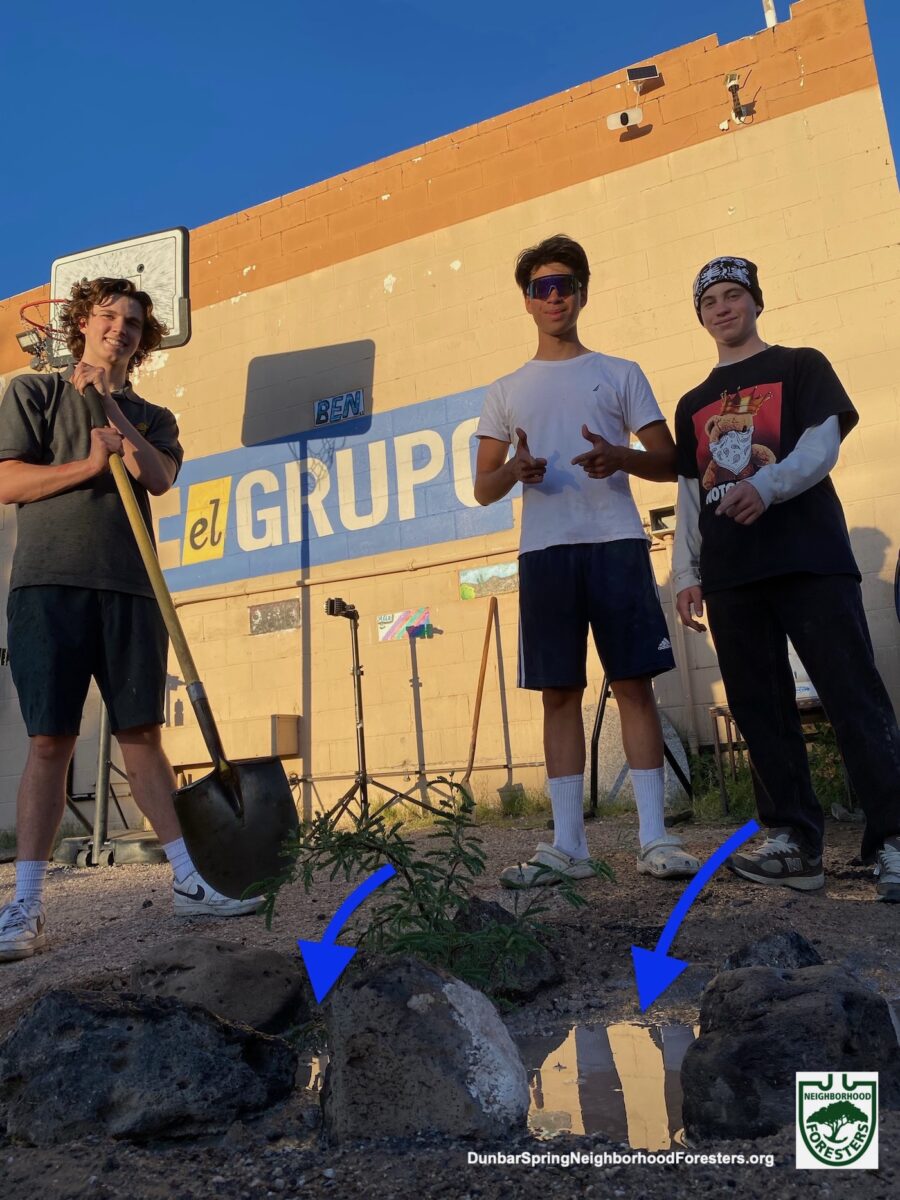
Photo: Brad Lancaster
Organizing, community outreach, permitting, and coordination
Dunbar/Spring Neighborhood Foresters
Design & plant selection
• Brad Lancaster of Rainwater Harvesting for Drylands and Beyond
Contractors we collaborated with to create the earthworks pre-planting, and the curb core holes post-planting:
• Little John Excavating
• Dryland Design
• Tucson Concrete Cutting
Local plant nurseries from which we sourced the plant material:
• Desert Survivors Native Plant Nursery
• Nighthawk Natives Nursery
• Spadefoot Nursery
• Wildlands Restoration
Local company from which we sourced the Catalina granite to line the basin banks
• Churchman Sand & Gravel
Huge thanks to the many volunteers that helped plant out all these water-harvesting earthworks!
We couldn’t do it without you, and you all can now further spread these good practices and knowledge deeper throughout our community.
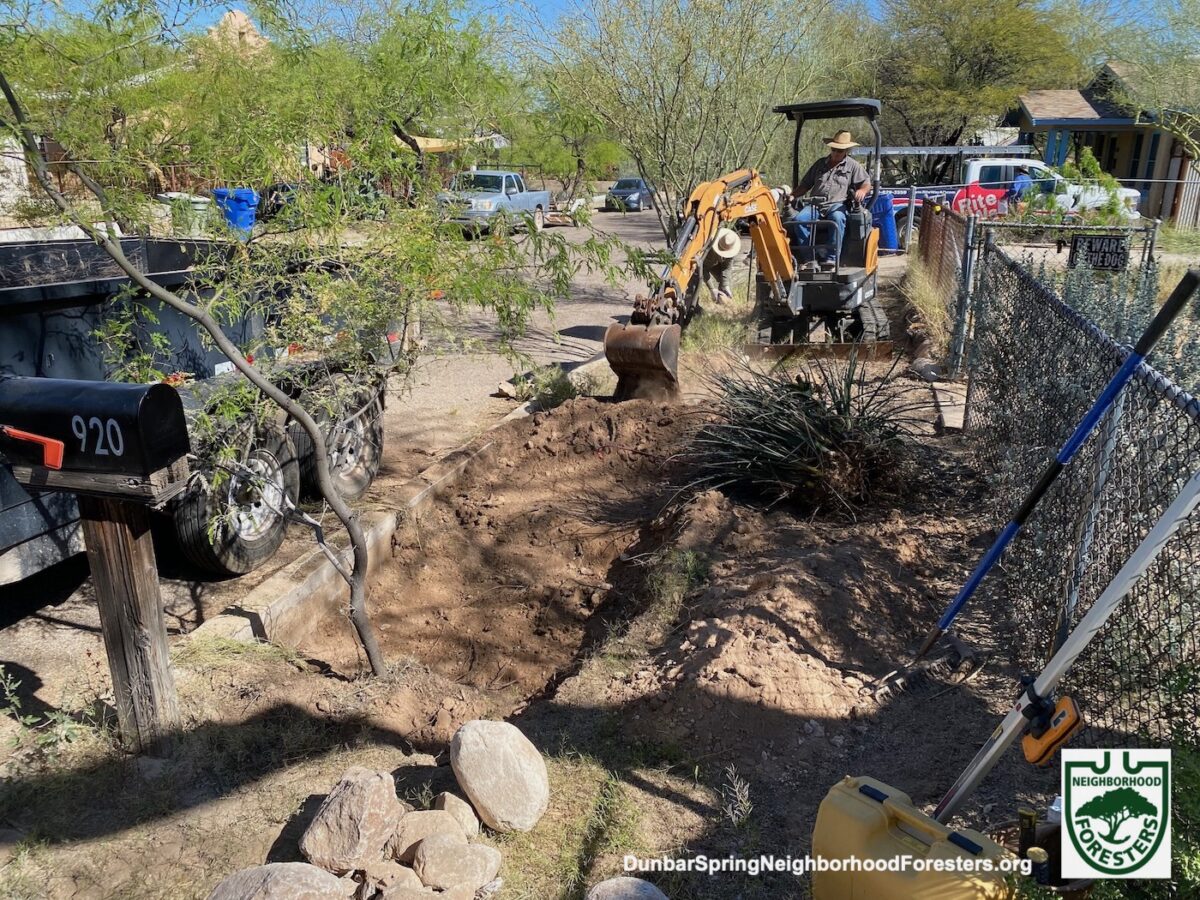
Photo: Brad Lancaster
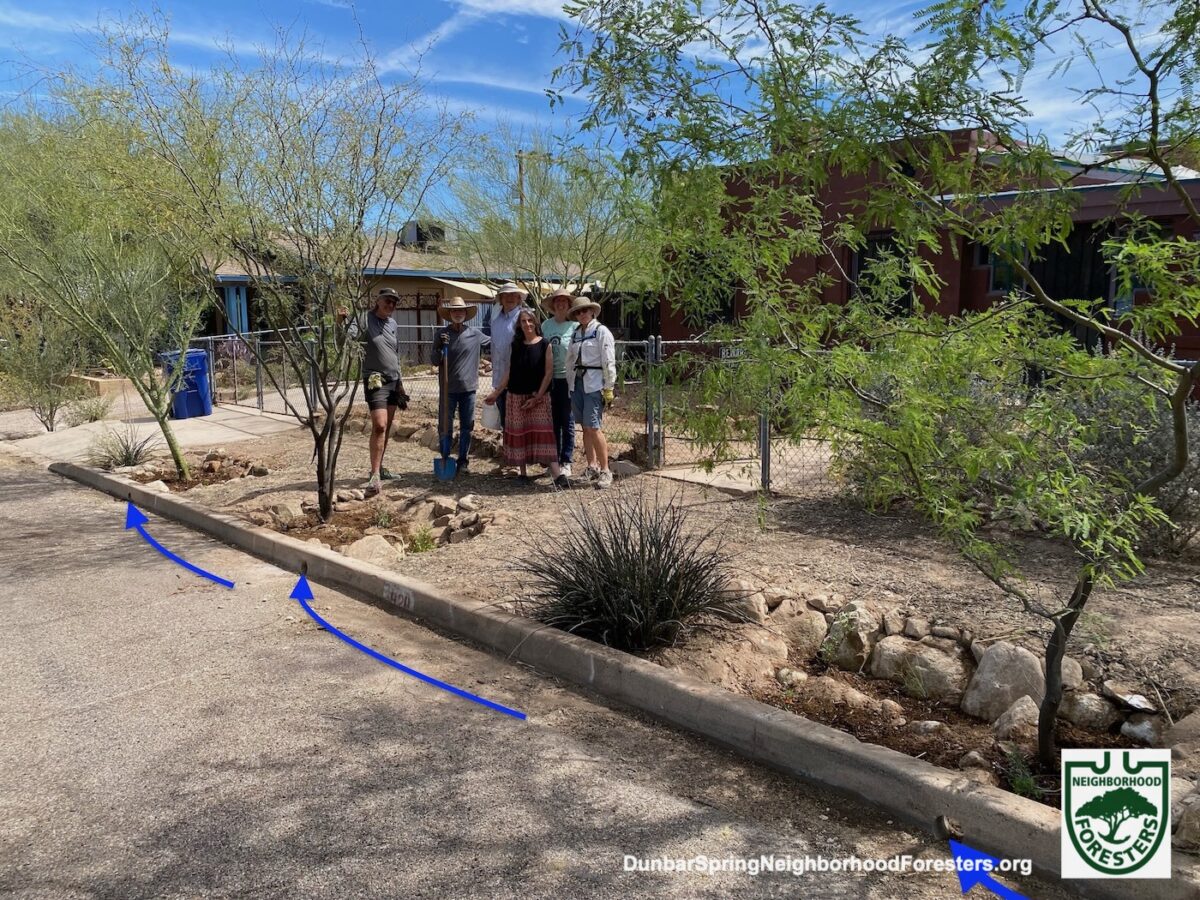
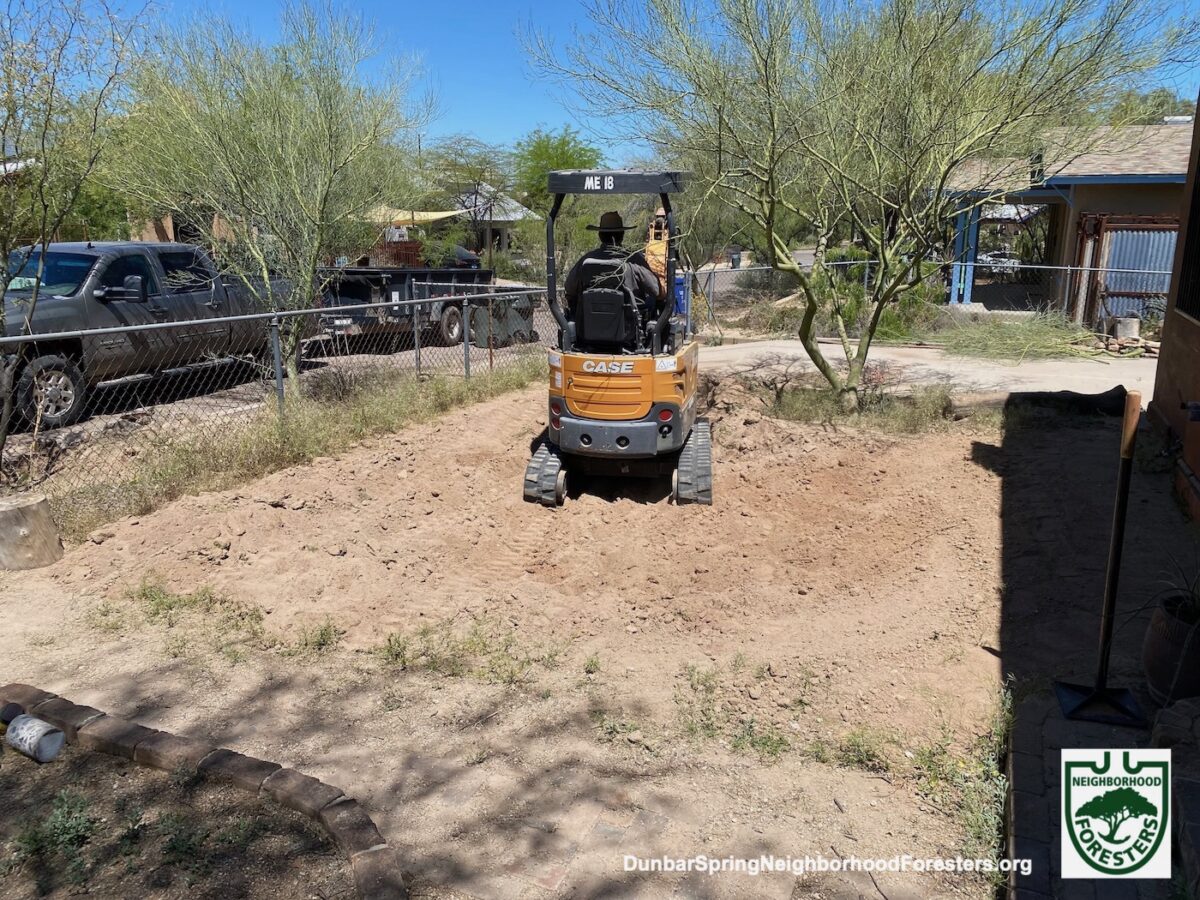
Photo: Brad Lancaster
Spread the word for next year
If you live within this waterhood share this with you neighbors, as we’ll be taking orders for the 2025 plantings in November 2024. Check our Events page and Blog later this year for updates. Or better yet, sign up on our Contact page.
And if you live in this or a different waterhood, consider starting up a neighborhood forester effort in your neighborhood (we can help you).
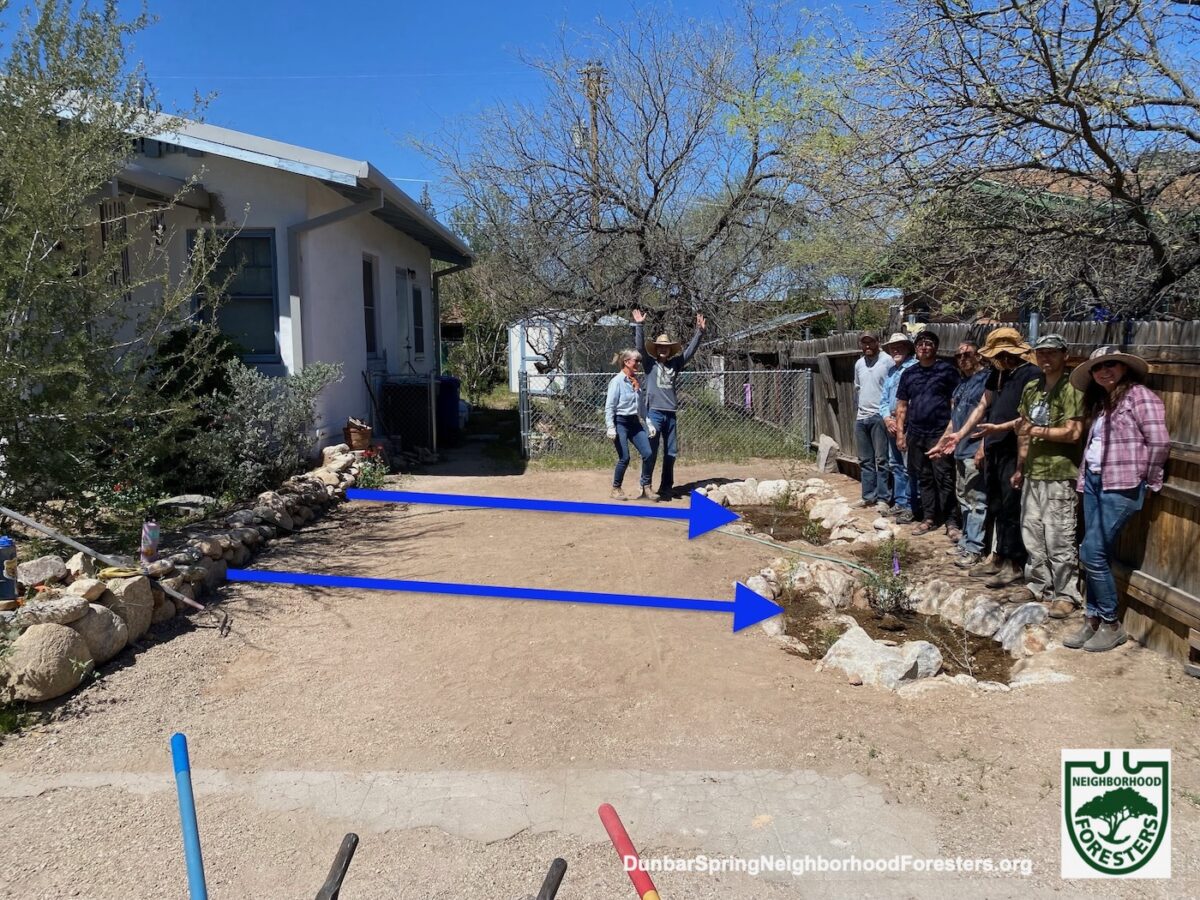
Photo: Brad Lancaster
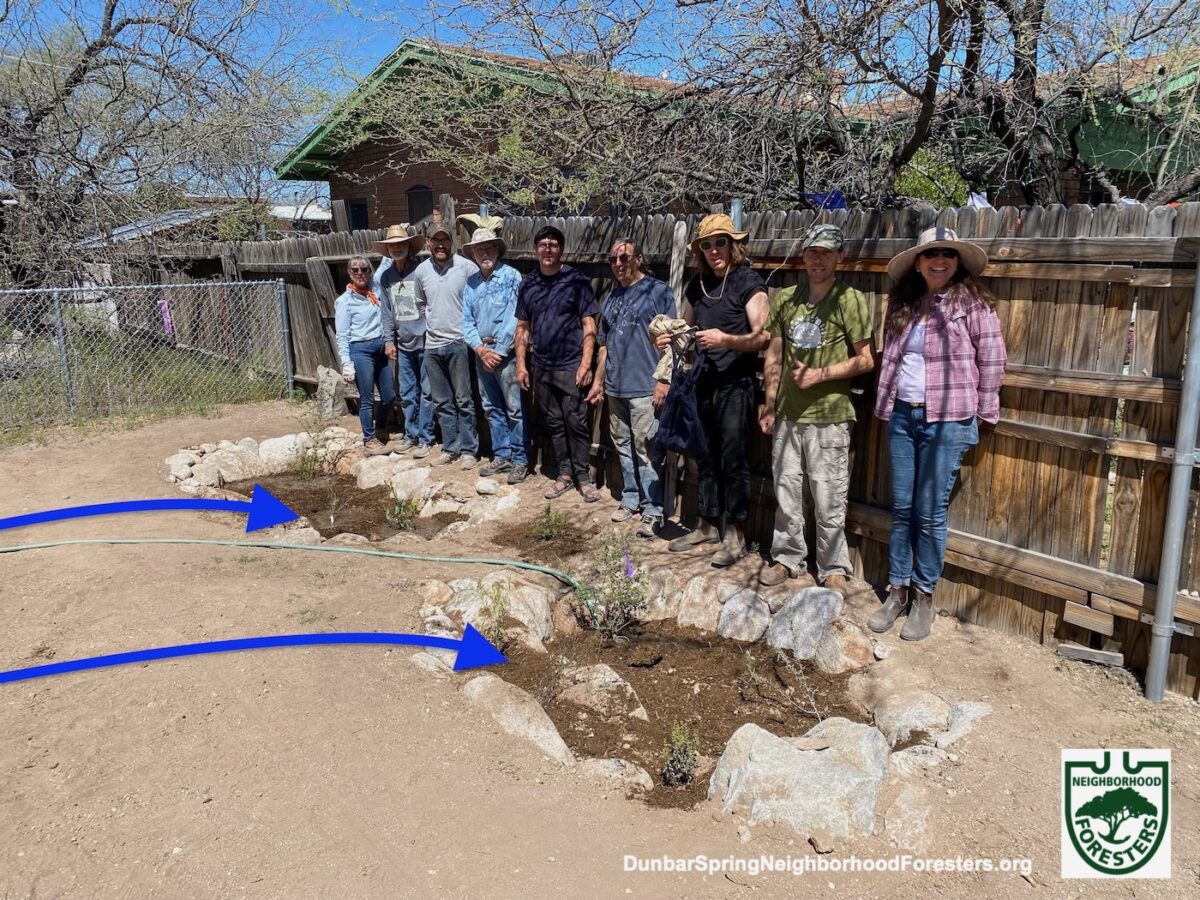
Photo: Brad Lancaster
Water harvesting books for more info:
Rainwater Harvesting for Drylands and Beyond, Volume 1 and Volume 2
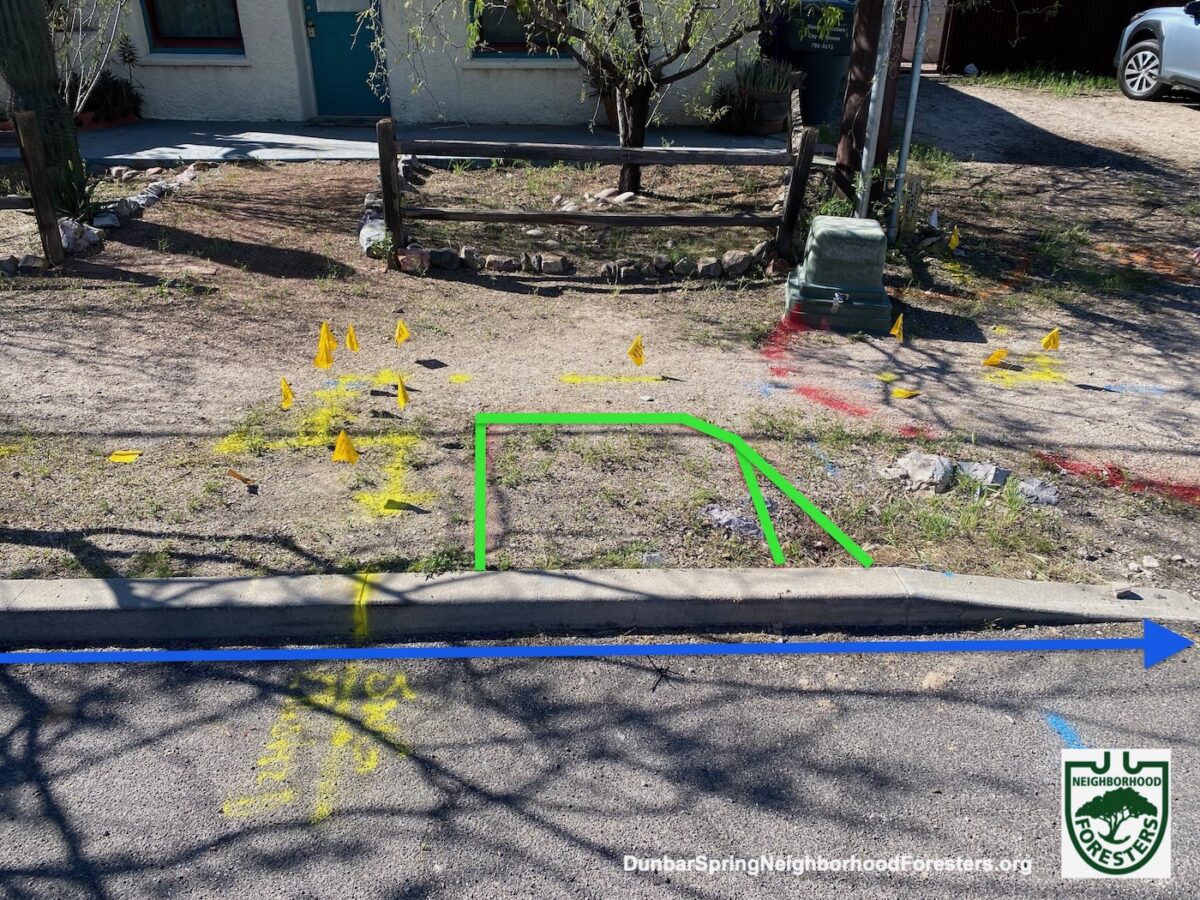
Note the colored spray painted lines on the ground. Yellow shows gas line. Red shows electrical line. Blue shows water line. The tiny basin just barely fits within the one clear spot amongst the underground utility lines (the underground utilities SHOULD be kept OUT of the plantable spaces in our public rights-of-ways, especially the best planting spaces, such as along the street where street runoff can be easily harvested to freely water the plantings).
Blue arrow denotes street runoff flow.
Photo: Brad Lancaster

Photo: Brad Lancaster

Blue arrow denotes water flow.
Photo: Brad Lancaster
Breakdown of the 2023 planting numbers by neighborhood:
Dunbar/Spring Neighborhood
Planted:
Over 15,000 gallons of stormwater per year
14 trees that will grow to full size
87 understory plants
9 curb cores (plus, one driveway dip in curb was used instead of a curb core)
31 volunteers

One basin has a curb core drilled through the street curb to let street runoff into the basin, while the other basin extends to the existing dip in the curb where there had once been a driveway. Blue arrows denote water flow.
Photo: Brad Lancaster
West University Neighborhood
Planted:
Over 30,000 gallons of stormwater per year
12 trees that will grow to full size
49 understory plants
6 curb core
30 volunteers
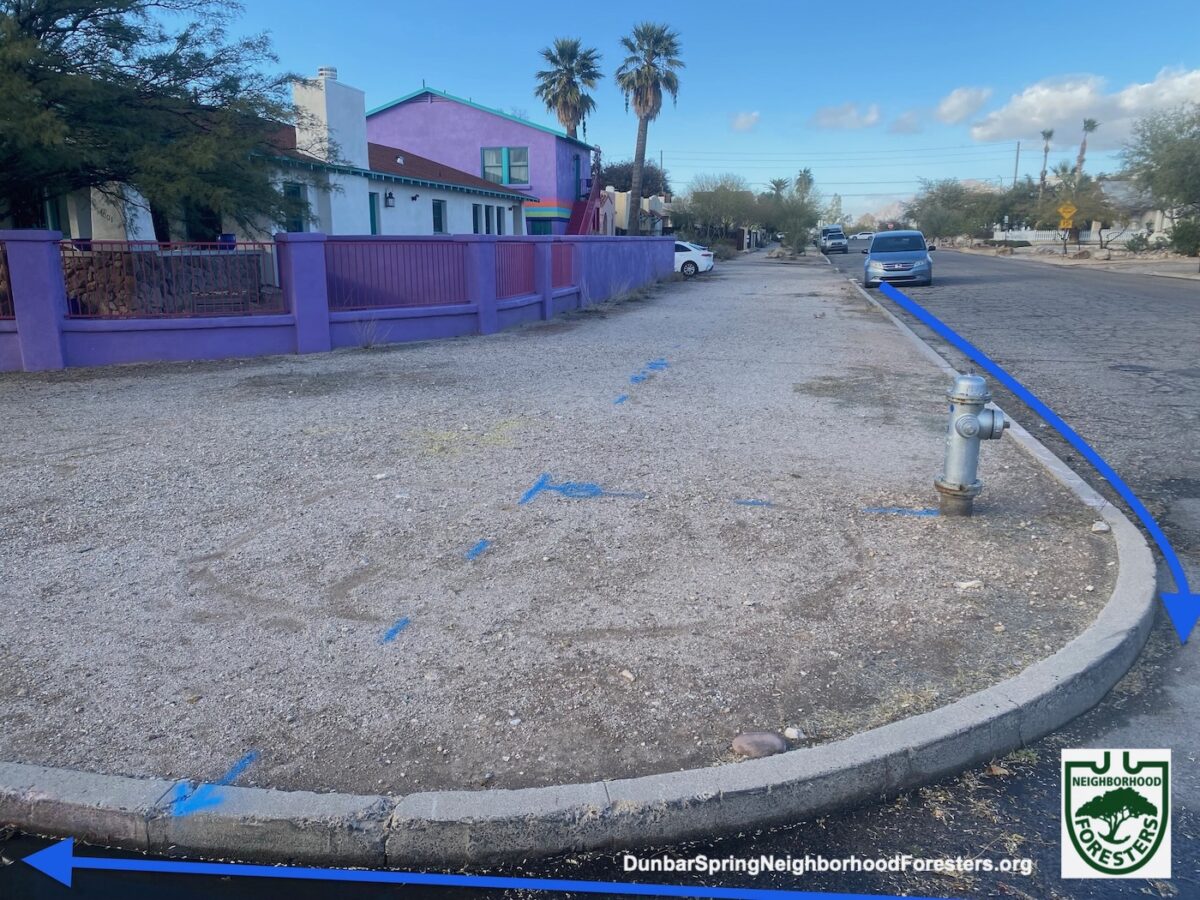
Photo: Brad Lancaster

Rockwork by Dryland Design.
Photo: Brad Lancaster

Photo: Brad Lancaster
Please consider making a donation
to the Dunbar Spring
Neighborhood Foresters
so we can continue and grow these efforts, share lessons learned, and provide the organizational tools we continue to evolve to everyone:
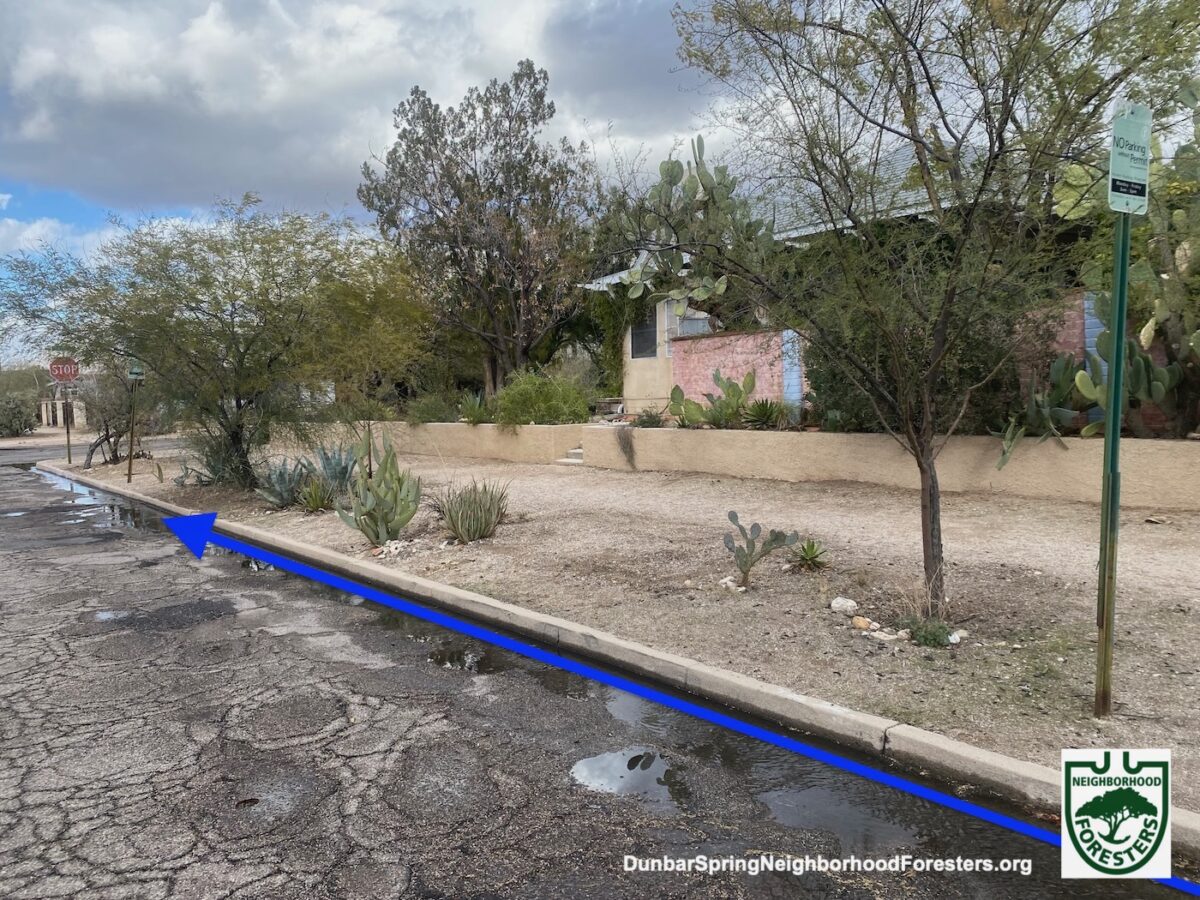
Blue arrow denotes water flow. Photo: Brad Lancaster

Blue arrow denotes water flow.
Photo: Brad Lancaster
To see plantings from other years:
Annual rain & native food forest plantings another success in 2023
Annual rain & native food forest plantings another success in 2022
Annual rain & native food forest plantings another success in 2021



